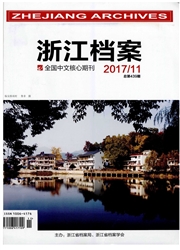

 中文摘要:
中文摘要:
明清以来,天柱是边疆社会碑刻运用最为频繁的地区之一。该地举凡示禁、褒奖、布告、判案、林木保护、移风易俗、筑路修桥、捐资助学、宗族迁徙、祠堂修缮、寺庙宫观之修建,等等,民众无不刻碑勒石,以示郑重。究其分类言之,又大体可分为官府告示类、乡规民约类、路桥井渡类、学校教育类、祠堂宗族类、寺观庙宇类等六大类。这些作为乡村社会公共信息发布或传播媒介的碑刻,具有重要的学术价值。
 英文摘要:
英文摘要:
Since the Ming and the Qing Dynasties, Tianzhu has become the area most frequently using in- scriptions on the frontier society. The inscriptions that they made involved all the aspects of social life: the sign to ban, an award, a notice, a verdict on legal cases, forest protection, custom change, road and bridge build- ing, donations to schools, clan migration, renovation of ancestral halls, construction of temples and, palace, etc. They did all this to show the importance of their decision. Based on the variety of the inscription, there were roughly six categories : government notices, contracts among the villagers, for the construction of roads, bridges, wells and ferries, school education, for ancestral halls or clans, and temples. These inscriptions used as rural public information or media boards have important academic value.
 同期刊论文项目
同期刊论文项目
 同项目期刊论文
同项目期刊论文
 期刊信息
期刊信息
